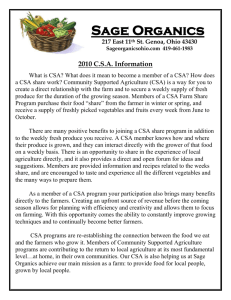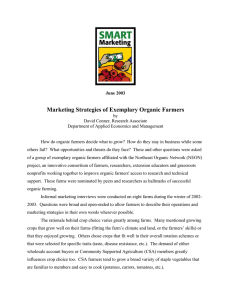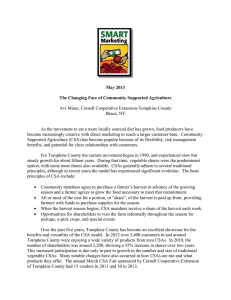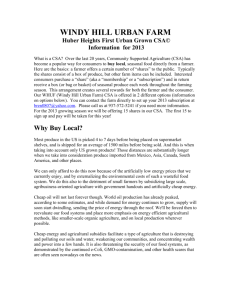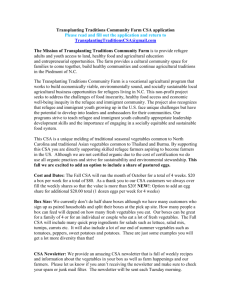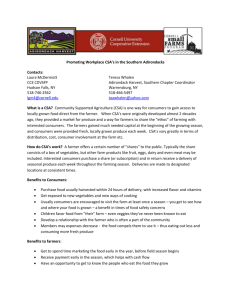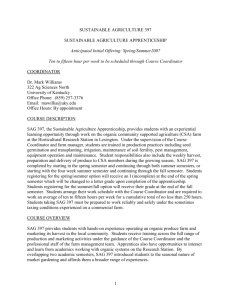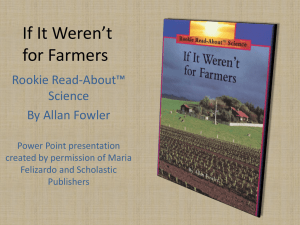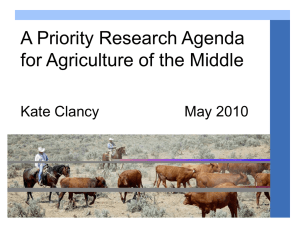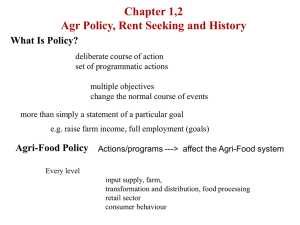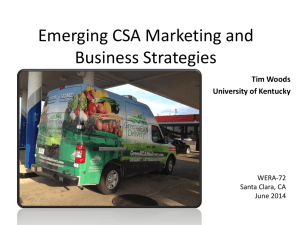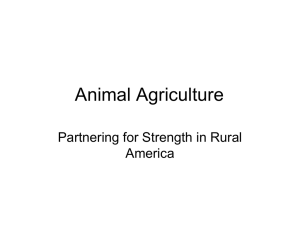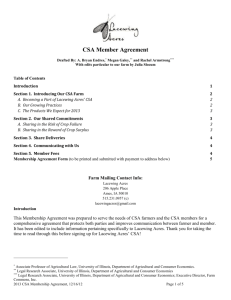conf8CSagriculture
advertisement
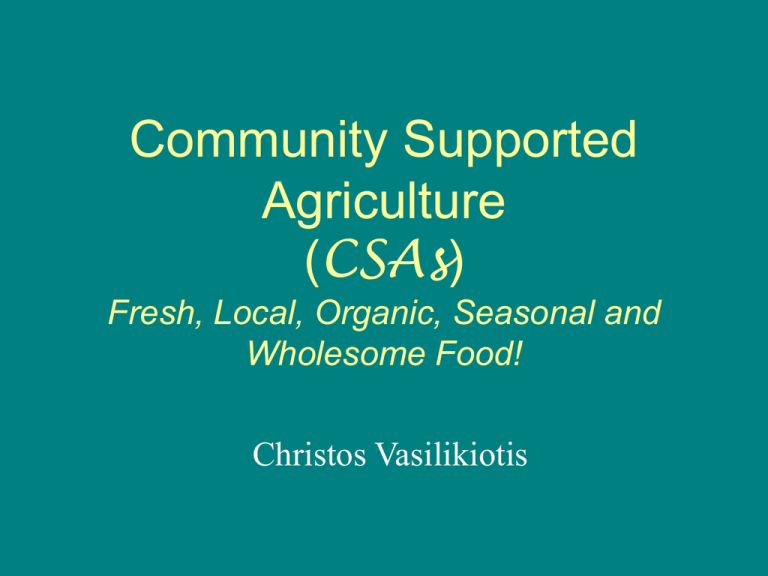
Community Supported Agriculture (CSAs) Fresh, Local, Organic, Seasonal and Wholesome Food! Christos Vasilikiotis Comparison of the Industrial and Ecological Models of Agriculture Industrial model Ecological model Energy intensive Information intensive Linear process Cyclical process Farm as factory Farm as ecosystem Single enterprise Monoculture Many enterprises Diversity of plants and animals Low-value products Higher-value products Single-use equipment Multiple-use equipment Passive marketing Active marketing Sustainable Agriculture • Ecologically sound - respect for the environment • Economically viable • Socially just - provide social benefits to the farmer, the farmworkers and the community Organic Farming is an ecological production management system • Promotes and enhances biodiversity • Promotes biological cycles and soil biological activity • Minimal use of off-farm inputs • Employs management practices that restore, maintain and enhance ecological harmony. Certified Organic Acreage in Greece QuickTime™ and a TIFF (Uncompressed) decompressor are needed to see this picture. Community supported agriculture (CSA) or Box scheme • CSA Benefits to the community Connection with the farmer: knowing who and where grows your produce • Learning about new vegetables and how to use seasonal ingredients • Eliminating packaging transportation costs (both direct costs and environmental costs) On average food in the US travels 1300mi. Most CSA members live within a 30-40 mile radius of the CSA farm. In addition, there is minimal packaging required and most CSAs reuse their boxes. • Produce does not need to meet market cosmetic standards, so little is discarded. CSA Benefits (cont.) • CSAs create a sense of social responsibility and stewardship of local land. • CSAs supports the biodiversity of a given area and the diversity of agriculture through the preservation of small farms producing a wide variety of crops. • CSAs keeps food currency in the local community and contribute to the maintenance and establishment of regional food production. Benefits to the Farmer • Tailor crops to their market. Farmers can plan ahead of time which crops they need and avoid crop waste that is so common with conventional farms. • With a "guaranteed market" for their produce, farmers can concentrate in growing healthy food for their customers • The system eliminates the middlemen, resulting in a good income for the farmer and reasonable prices for the consumer. • Allows farmers to farm in a sustainable way, in diversified farms. Special challenges • Requires farms that are diversified and grow a large variety of crops • Educate consumers about the delights of eating in-season produce • CSA farms can become management nightmares if done on too large a scale • CSA farming requires good people skills. J an Cabbage Cauliflower Celery Broccoli Turnips Carrots Beets Asparagus Asian Pears Fennel Lettuces Spinach Stir Fry Mix Fresh Onions Garlic Walnuts Daikon Greens Salad Mix Leeks Feb Mar Apr May J un e J uly Aug S ep t Oct No v De c Jan Onions Green Beans SummerSquash Flowers Potatoes Peaches Corn Cucumbers Melons Basil Eggplant Tomatoes Sweet Peppers Winter Squash Feb Mar Apr May Jun e July Aug S ep t Oct No v De c Full Belly Farm • • • • • • CSA with 650 members 15 wholesale & 15 retail accounts Three farmers markets 35 full-time workers year-round Owners’ entire income comes from the farm Produces 120 crops on its 200 acres October 12 box Contents • • • • • Sweet peppers Green beans Carrots Salad mix Butternut squash • Apples • • • • • Garlic Pomegranate Broccoli Onions Potatoes Fairview Gardens is now a 12-1/4 acre island surrounded by tract homes and shopping centers. It produces more than 100 different fruits and vegetables, feeds 500 families, and employs more than 20 people. young celery grows in the alleys of our peach orchard, a space that's wasted in most commercial orchards. Organic Farming in Greece • 18% of the population is involved in agriculture • Average plot size is 4.3 hectares • Organic farming in Greece represents only 0.7% of total agricultural land • Organic farmers get 600-900 Euros/ha for 5 years


